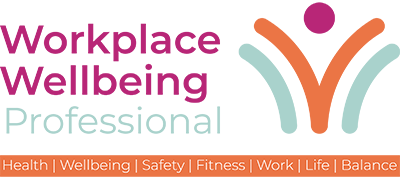When we polled employees across the country to test how anxious they were about the cost of living, one of the statistics jumped out at us and should put HR and wellbeing teams on high alert. It showed that women are far more anxious than men.
As many as 84 per cent of women said they were worried, compared to 73 per cent of men.
Our Britain At Work report also found that four years since the crisis began, 34 per cent of women remain very worried about the current cost of living compared to 22 per cent of their male counterparts.
It inspired us to take a deeper dive into how the cost-of-living crisis continues to affect female employees, why it may be hitting them harder than men – and look at how workplace wellbeing professionals can better support their female employees.
Rising Concern
Inflation and interest rates may have dropped since the peak of the cost-of-living crisis, but there was a lot of evidence to suggest that women are suffering more.
The annual Britain At Work report found women are more likely to be worried about the cost of living than they were a year ago, up from 55 per cent in 2023.
When it comes to finances, female employees worry about money more frequently than men, with 74 per cent of women worrying weekly or more often, compared to just 62 per cent of men.
Other statistics which illuminate the gender divide across the cost of living included:
- 39 per cent of women employees worry about money every day compared to 27 per cent of men
- 79 per cent of women employees say the increased cost of living reduced their spending on routine healthcare costs such as optician appointments, dental services and physiotherapy compared to 73 per cent of men
- 1 in 3 employees cancelled check ups (30 per cent men, compared to 35 per cent women)
- Women are more likely to say that employers should support them with the increased cost of living – 78 per cent of women compared to 72 per cent of men
The report revealed there was no significant difference between men and women saying that the cost of living had impacted their ability to do their job.
However, it did uncover that women are less likely to talk to their employer about struggling financially, with just 41 per cent for women prepared to do so, compared to 50 per cent for men.
That should be a big worry for HR and wellbeing departments because if women don’t tell you they are suffering, how will you know they need help? There are many employee benefits which can address this, such as cash plans or employee assistance programmes which often include financial literacy support. These enable employees to seek help without asking their manager but make sure you remind employees about the support services you have so that they use them.
This shows why benefits should always consider financial and mental health, as well as physical.
The report uncovered the main action employees took to help with the cost of living was buying cheaper food (68 per cent), while more than 6 in 10 (61 per cent) used savings or credit cards to help with the cost of living.
It also found 49 per cent of employees had cancelled social engagements with friends, 47 per cent had cancelled family days out and 44 per cent had cancelled holidays to help with the cost of living, which could have a potential knock-on impact on mental health and social isolation.
This means people are potentially increasing the risks they could suffer mental health problems later down the line because they are not taking a break or making the most of their spare time.
Taking Action
So, why are women worrying more and how should businesses help their employees?
The Office for National Statistics found the gender pay gap, which has been declining steadily over the last decade, still stood at 7 per cent in 2024. Notably the gender pay gap is larger for employees over the age of 40, than those aged under 40.
It is also worth considering that women are disproportionately represented in industries which offer lower pay and fewer opportunities to advance, such as retail and hospitality, which could contribute to feeling the pressures of inflation more than men.
Helping Hand
It is important for workplace wellbeing professionals to understand the impact of worry and anxiety amongst their female employees.
This pressure could cause them to be less socially inclined or engaged, potentially withdrawing from helping others. It could also lead to a reduction in productivity at work.
Taking action at this stage to mitigate the impact of stress is important.
For example 44 per cent of employees were worried because they feared losing their jobs, according to our report.
When employees are anxious about their job future, a good place to start is to communicate openly about the financial state of the company.
If the company is recording great results, tell employees. If there are challenges, explain what the company will do to address these and what this will mean for teams.
Workplace wellbeing professionals should cultivate a culture of participation, sharing and support.
They should build a feeling that we’re all in this together – as a business and as people who are facing continued struggles with income, revenue, spend and commitments.
It’s so easy for people who are struggling to suffer in silence, but if you create a safe space in which people feel comfortable sharing how they feel, this can help to remove any stigma around opening up to line managers. Lead by example and others will follow.
Businesses should aspire to be a listening and learning organisation through their actions.
Next Steps
While the cost of living isn’t making as many headlines as it did when the crisis first emerged, it hasn’t gone away.
And while it continues to impact both men and women, it’s clear that the problem is worrying women employees more.
There is also concern that these issues have the potential to impact performance at work – and to result in long-term health and mental health complications for many employees.
For employers, it’s a wake-up call that their people, and women in particular, need help and support more than ever before.

Paul joined Health Shield Friendly Society as commercial director in 2021 and is responsible for propositions, marketing and distribution at the award-winning not for profit mutual founded in 1877 which is dedicated to helping businesses stay in the best of health by providing employee health benefits.
He is also the CEO at Health Shield Friendly Society subsidiaries Prevent and Medex Protect.
A chartered director with over 35 years of experience working in financial services, he has served as an executive in the mutual health insurance sector for 15 years, working across Asia, North America, Australia and Europe.
With a proven track record of developing, marketing and distributing award-winning products which deliver sustainable membership and revenue growth, he is passionate about supporting and improving people's health and growing the mutual insurance sector.


